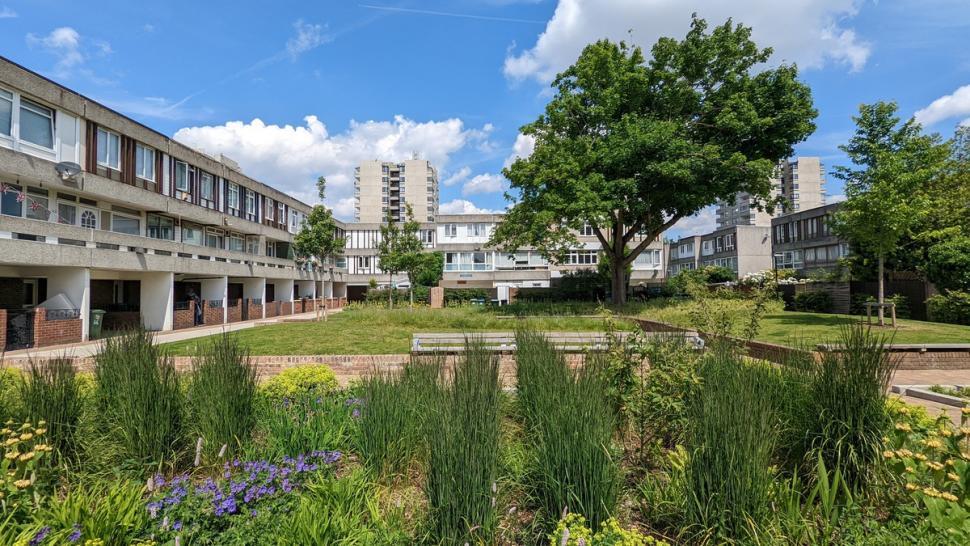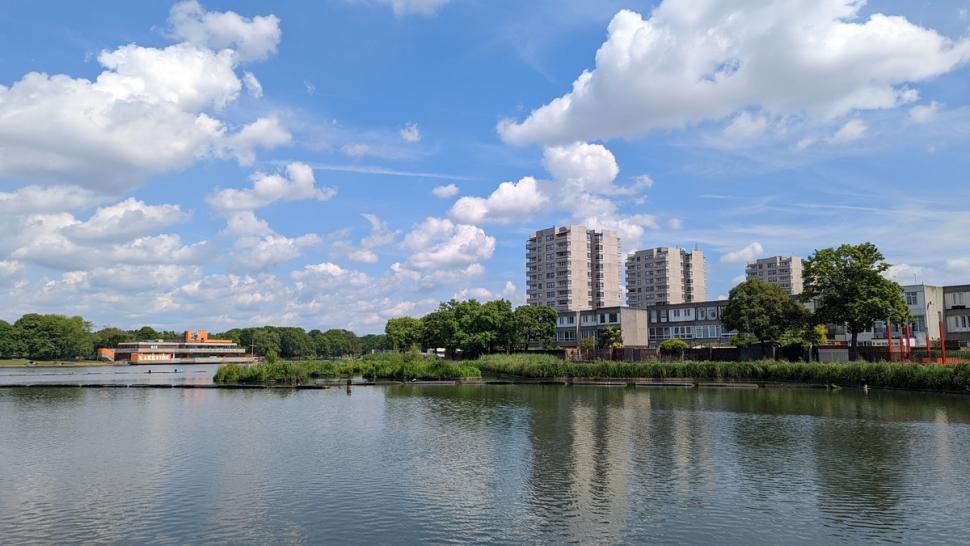- News
- Reviews
- Bikes
- Components
- Bar tape & grips
- Bottom brackets
- Brake & gear cables
- Brake & STI levers
- Brake pads & spares
- Brakes
- Cassettes & freewheels
- Chains
- Chainsets & chainrings
- Derailleurs - front
- Derailleurs - rear
- Forks
- Gear levers & shifters
- Groupsets
- Handlebars & extensions
- Headsets
- Hubs
- Inner tubes
- Pedals
- Quick releases & skewers
- Saddles
- Seatposts
- Stems
- Wheels
- Tyres
- Tubeless valves
- Accessories
- Accessories - misc
- Computer mounts
- Bags
- Bar ends
- Bike bags & cases
- Bottle cages
- Bottles
- Cameras
- Car racks
- Child seats
- Computers
- Glasses
- GPS units
- Helmets
- Lights - front
- Lights - rear
- Lights - sets
- Locks
- Mirrors
- Mudguards
- Racks
- Pumps & CO2 inflators
- Puncture kits
- Reflectives
- Smart watches
- Stands and racks
- Trailers
- Clothing
- Health, fitness and nutrition
- Tools and workshop
- Miscellaneous
- Buyers Guides
- Features
- Forum
- Recommends
- Podcast
OPINION
What can Thamesmead – once the ‘Town of the Future’ – teach us about 15-minute cities?
 Thamesmead 01 (copyright Simon MacMichael)
Thamesmead 01 (copyright Simon MacMichael)When I was seven, we moved to a new community on the edge of London that the GLC ambitiously billed as ‘the Town of the Future’ – a place where, in the initial stage of the development, no-one lived more than a 15-minute or so walk from the local shops, health centre, primary and secondary schools, library, social club and so on, centred on parkland that included a man-made lake.
The initial phase of Thamesmead – the backdrop to Stanley Kubrick’s dystopian masterpiece, A Clockwork Orange – bore the hallmarks of what planners would nowadays term a 15-minute city, with all local amenities within easy walking distance or a short bike ride away.
Meanwhile, the motor car was secondary. Sure, each house had a garage, and there was ample parking provision beneath the concrete tower blocks, but the roads mainly ran around the outside of the development and I wouldn’t even have to cross one in the 10-minute walk from home to the shops through a succession of tree-filled, traffic-free squares and across a footbridge over the lake.
Of course, my memories were formed as a child and it’s easy, given the passage of time, to romanticise them – though returning there for an afternoon last summer with two of my siblings to visit old haunts before they fall victim to regeneration saw us remember our childhoods with fondness.
But, the longer we lived there, the more pronounced and more noticeable the social tensions on Thamesmead became, it acquired a grim reputation in the years after we’d left for crime, drugs, gang violence and more.
And while in many ways it was a terrific place to be a kid when we were there, our parents’ experience would have been very different, juggling bringing up the four of us while also dealing with long and awkward commutes each day to work in central London.
That latter point reflects one of the reasons why the vision the planners had in the early days never quite translated into reality as subsequent phases of the new town were developed – the Jubilee line station promised in the early 1970s never made it off the drawing board, and the area remains poorly served by public transport.
Instead the car, and the infrastructure needed to support motoring, including a dual carriageway cutting across from Woolwich to Erith, became more dominant in the newer parts of the town developed from the late 1970s onwards.
It’s a stark contrast that is thrown into sharp relief by the abandonment of the initial lofty ideal, but it reflects something that has played out more subtly across the country following the onset of the age of mass car ownership.
If you live somewhere that pre-dates World War 2, the likelihood is that your neighbourhood would have had most if not all of the daily amenities you need within walking distance, and in many towns and cities up and down the country, that’s still the case.
For example, it is often said that London is in essence a collection of villages, and residential parts of the outer boroughs aside, that’s still the case; where I live now is no more than a 15-minute walk to Chiswick High Road in one direction, and Acton High Street in the other.
But in many other places, local shops and other facilities all but disappeared as people were lured to out-of-town supermarkets and retail and leisure parks – and in the majority of cases, getting there by car.
And the primacy of that one mode of transport, in the past couple of decades, has had a profound effect on planning policy. When I lived outside Oxford, a major housing development comprising hundreds of homes was built on the edge of a village I’d regularly pass through on the bus.
What wasn’t built though, were the amenities to serve the people who lived in those houses. The village shop was long gone, and despite the increased population, the only local option was the small convenience store at a petrol station on the main road on the outskirts of the village – so many residents, old and new, would see little option other than to drive into Oxford, or at least retail developments on the outskirts of the city.
In its essence, the emergence of the concept of the 15-minute city in recent years within planning circles has sought to redress that balance, by ensuring that people have the amenities they need on their doorstep – whether that be healthcare, education, space for leisure, or places to shop.
Whatever its opponents may claim, it categorically has nothing to do with some global conspiracy aimed at restricting movement, of forcing people to remain within a mile or so of their home.
No-one’s saying you can’t drive to the next town to do your weekly supermarket shop, or go into the centre for a night out.
But what it does do is give people the choice of whether or not to do that by having options available to them locally, while at the same time making the areas they call home more liveable, more attractive, and more human.
Is that really such a bad thing?
More Opinion
Latest Comments
- mark1a 54 min 58 sec ago
They almost certainly will; back in 2022, here in Dorset, we were due to host stage 7 of the Tour of Britain, and for the months preceding, the...
- mdavidford 1 hour 10 min ago
The way back ones don't count - he said 'in the last 20 years' (presumably the cycling equivalent of 'in the Premier League era') so it's only 2007...
- whosatthewheel 1 hour 35 min ago
Only mugs buy anything for the full retail price these days. They will soon be reduced to 299, just like the 1st gen. which went from 375 to 199 in...
- Rendel Harris 2 hours 22 min ago
US Department of Transport Annual Household Travel Survey figures for USA 2017 attached. Miles cycled annually by population of the USA, 9 billion....
- Bmblbzzz 2 hours 36 min ago
How is it only an extra 56 minutes a day? That seems to imply either the road is very busy with vehicles, in which case it might not be delivering...
- KiwiMike 2 hours 46 min ago
I've lived in Perthshire for seven years. You really should stay abreast of NZ politics - believe me, Scotland is a beacon of properiety in...
- Bmblbzzz 2 hours 55 min ago
Good for the Scousers. But meanwhile back in Bristle...
- Rendel Harris 3 hours 13 min ago
"Gloucestershire Live" headline on Facebook...you actually have to open the story to discover a car was involved and he didn't just misjudge a bend...
- leedorney 3 hours 42 min ago
Next min we'll be hearing he's related to Ursula Von Der layen
- leedorney 3 hours 43 min ago
The UCI bores strike again... once done a 1/2/3 cat race and even then then where truly unrelentless

Add new comment
4 comments
My Dad did some of the landscape architecture around Thamesmead in the early days, (and Milton Keynes) . One of the most sad moments of my childhood, when he took us a few years later to visit the area and his face looking at the burnt out playground...
The key part of so many planning failures is the non completition of key aspects of a coherent strategy - where fundiNG gets cut and the PR of the early phases is passed...politicians should not control these decisions, but there needs to be much more fact checking and counter balance to the mis-information currently circulating about 15 min cities...
'give people the choice of whether or not to do that by having options available to them locally'.. that's what they said with the introduction of online banking; you have the choice of using the service online or in your local branch, but when the bank saw that the vast majority were banking online, they started closing local branches; my bank has now closed my local branch and also in the two suburbs closest to mine. So now, anyone that needs to do banking in person, has to drive a long way to a large shopping centre to find a branch.
That's different as banks are run for profit and aren't a public service, so if it's cheaper for them to close branches then they'll do it. With the growth of internet services, it's inevitable that banks can make more profit by not needing physical premises and for a lot of people, those aren't needed.
The development of Thamesmead reminds me a bit of Bradley Stoke in Bristol and how it became known as Sadly Broke:
It's an excellent thing, and comes under the headings of "sustainable communities" and "placemaking" in current planning parlance.